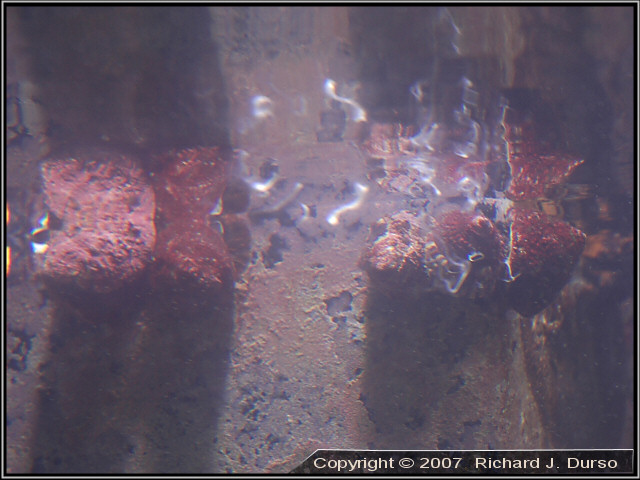
Trochus Snails Releasing Sperm- Trochus sp.
Picture taken May 2007, Nikon D70 Digital SLR, Nikkor 18-70mm DX lens Class: Gastropoda. Subclass: Orthogastropoda. Superorder: Vetigastropoda. Superfamily: Trochoidea. Family: Trochidae. Over the past few months the snails have been gathering at roughly a monthly interval for a community spawning event. |
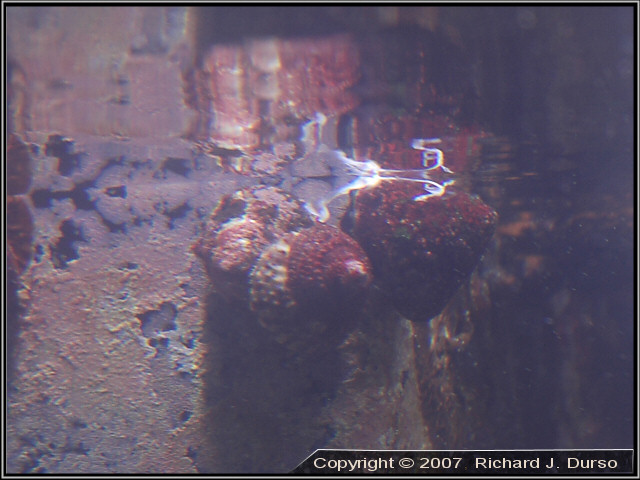
Trochus Snails Releasing Sperm- Trochus sp.
Picture taken May 2007, Nikon D70 Digital SLR, Nikkor 18-70mm DX lens The snails join together in tight clusters. I assume a female is in the center of most of the clusters with the males attempting to fertilize eggs being released (complete guess here). |
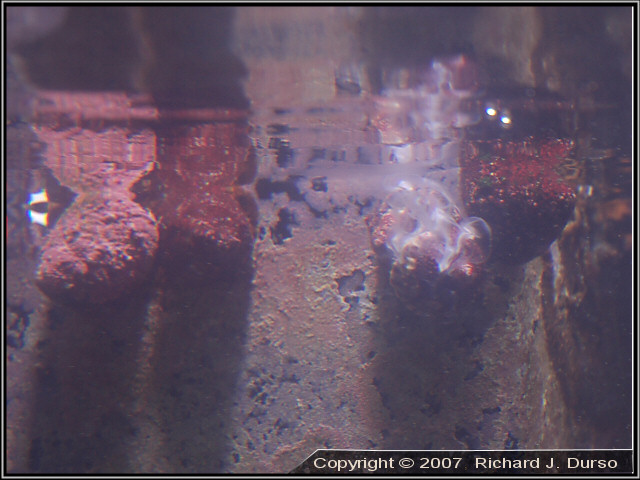
Trochus Snails Releasing Sperm- Trochus sp.
Picture taken May 2007, Nikon D70 Digital SLR, Nikkor 18-70mm DX lens The snails release sperms in set intervals spaced about 30 seconds apart. This behavior lasts for several hours. |
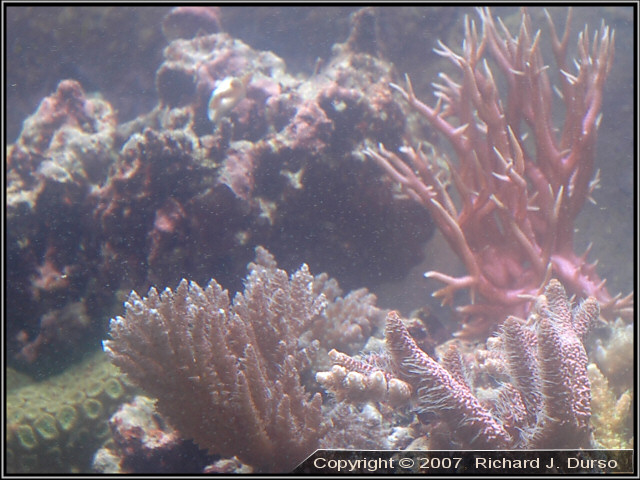
Millions of Eggs
Picture taken May 2007, Nikon D70 Digital SLR, Nikkor 18-70mm DX lens Millions of eggs floating in the water and the combination of sperm gives the tank water a white haze. The eggs bring out excellent polyp extension. This eggs can be seen in this picture. |
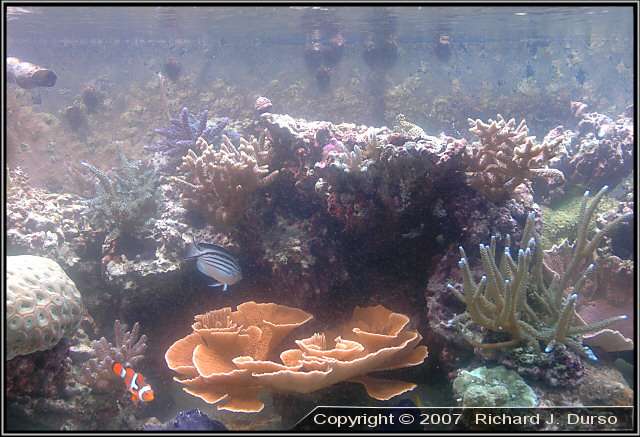
Spawning Events turn the water whitish.
Picture taken May 2007, Nikon D70 Digital SLR, Nikkor 18-70mm DX lens The water has a distinct white haze from the millions of eggs and sperm. |
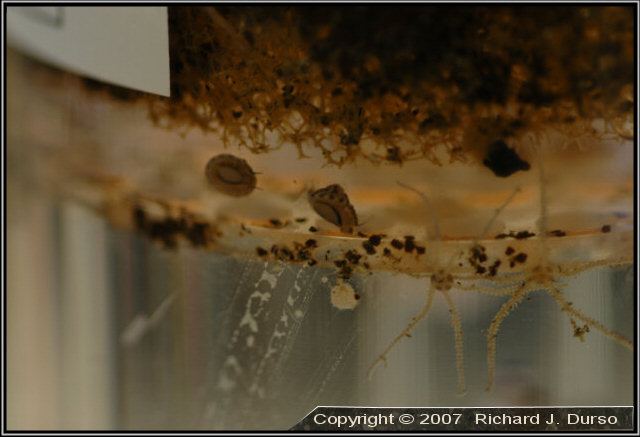
Baby snails and Sea Stars in Phosban Reactor .
Picture taken September 2007, Nikon D70 Digital SLR, Nikkor 18-70mm DX lens The system has had many snail spawning events and many snails have reached a size safe enough to be placed in the main display. Typically I found them inside the skimmer body, overflow chambers and sump. However, when these were found there were found in very small numbers (under three at a time). |
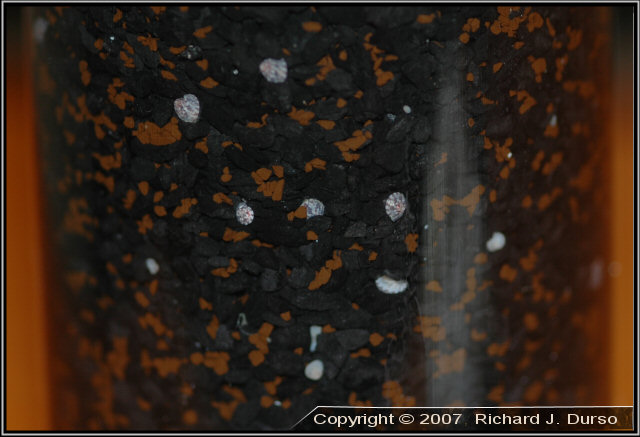
Baby snails living within Phosban Reactor.
Picture taken September 2007, Nikon D70 Digital SLR, Nikkor 18-70mm DX lens Upon getting ready to change the media within my Two Little Fishes Phosban reactor I was amazed to see a significant number of snails living in it. As can be seen, there is no sign of algae in the reactor. What can be going on in this to make this such a favorable location for snails to settle? |
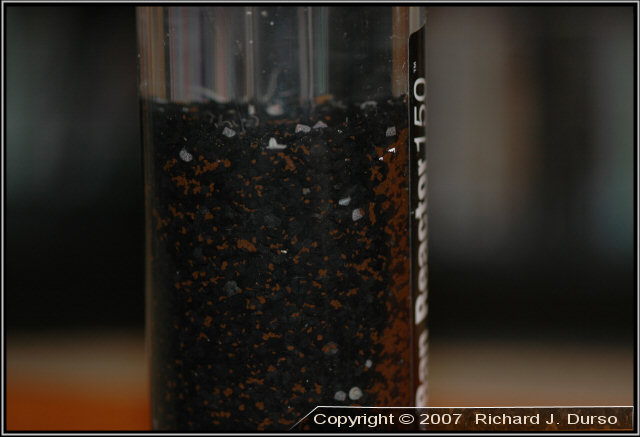
Baby snails living within Phosban Reactor.
Picture taken September 2007, Nikon D70 Digital SLR, Nikkor 18-70mm DX lens While many of the snails where towards the top of the reactor, snails were doing fine deep in the media and within the center of the reactor. The flow within the reactor is low, the media in the reactor does not tumble. The reactor is filled with a combination of TLF HydroCarbon 2 granular activated carbon and Phosban media. |
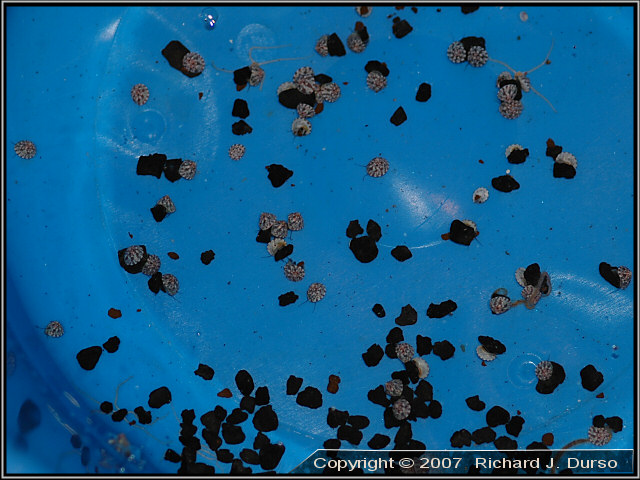
Some of the snails collected from the Phosban Reactor.
Picture taken September 2007, Nikon D70 Digital SLR, Nikkor 18-70mm DX lens A sample of some of the live baby snails removed from the phosban reactor. I did not remove all the snails, I only had time to pick out the larger snails. Many much smaller snails were simply tossed out as they were to difficult to locate and separate from the grains of media. |
